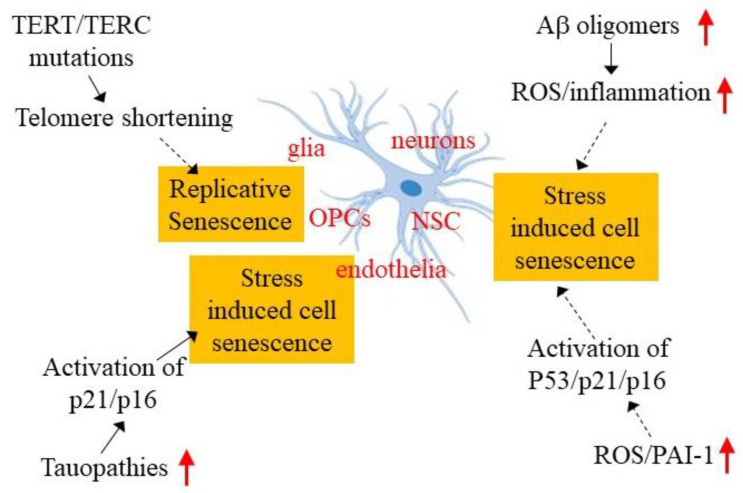Figure 2.
Potential mechanisms underlying brain cell senescence in AD. Various types of cells, including glia, oligodendrocyte precursor cells (OPCs), neuronal stem cells (NSCs), neurons, and endothelia, have been shown to undergo senescence in AD brain and/or AD model mice. Mutations in the telomerase reverse transcriptase (TERT) gene and telomerase RNA component (TERC), which leads to telomere shortening, hyperphosphorylated tau, increased Aβ oligomers, reactive oxygen species (ROS), and plasminogen activator inhibitor 1 (PAI-1) expression, are implicated in brain cell senescence in AD. Red arrows indicate increases in the amounts of these molecules.

